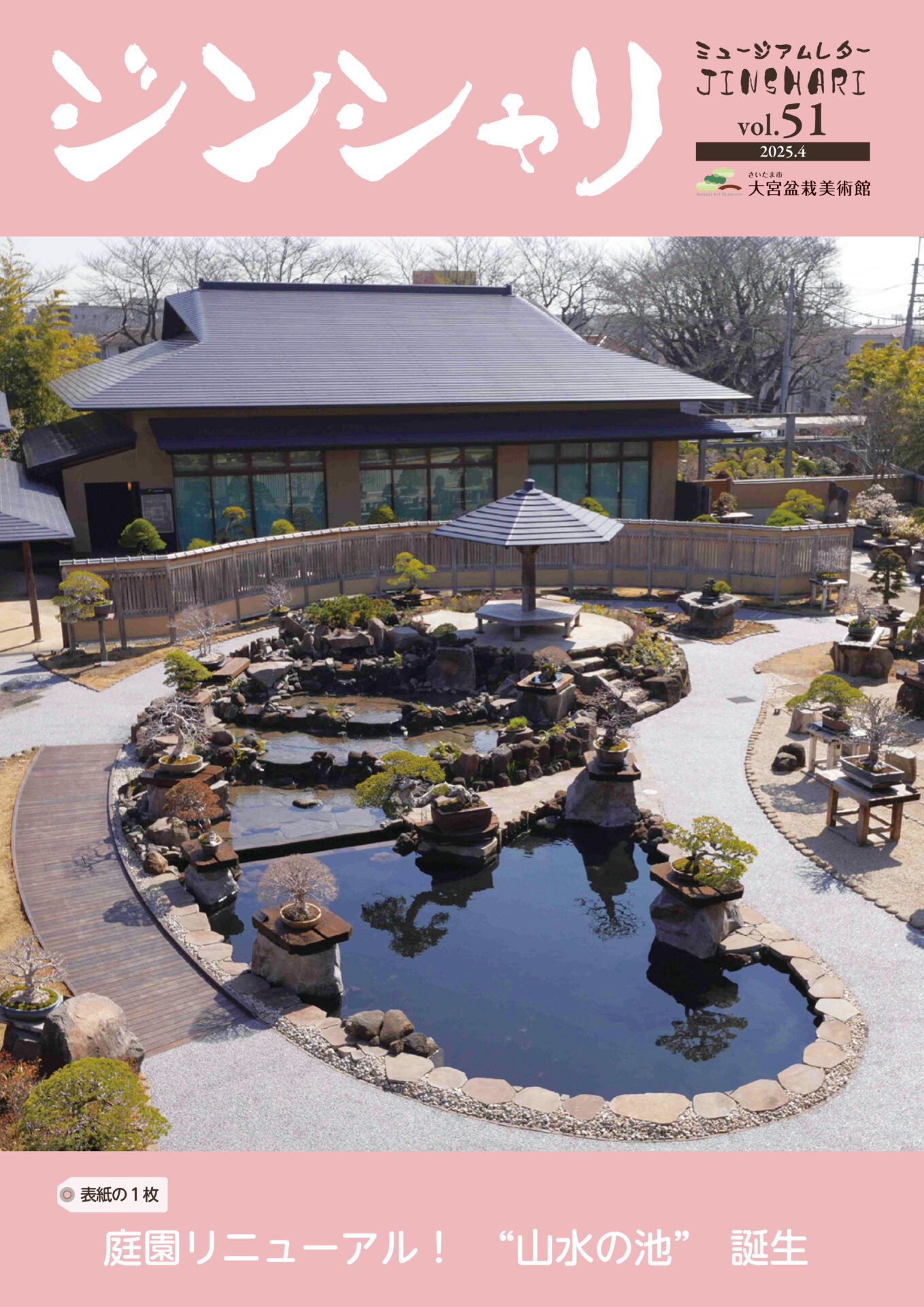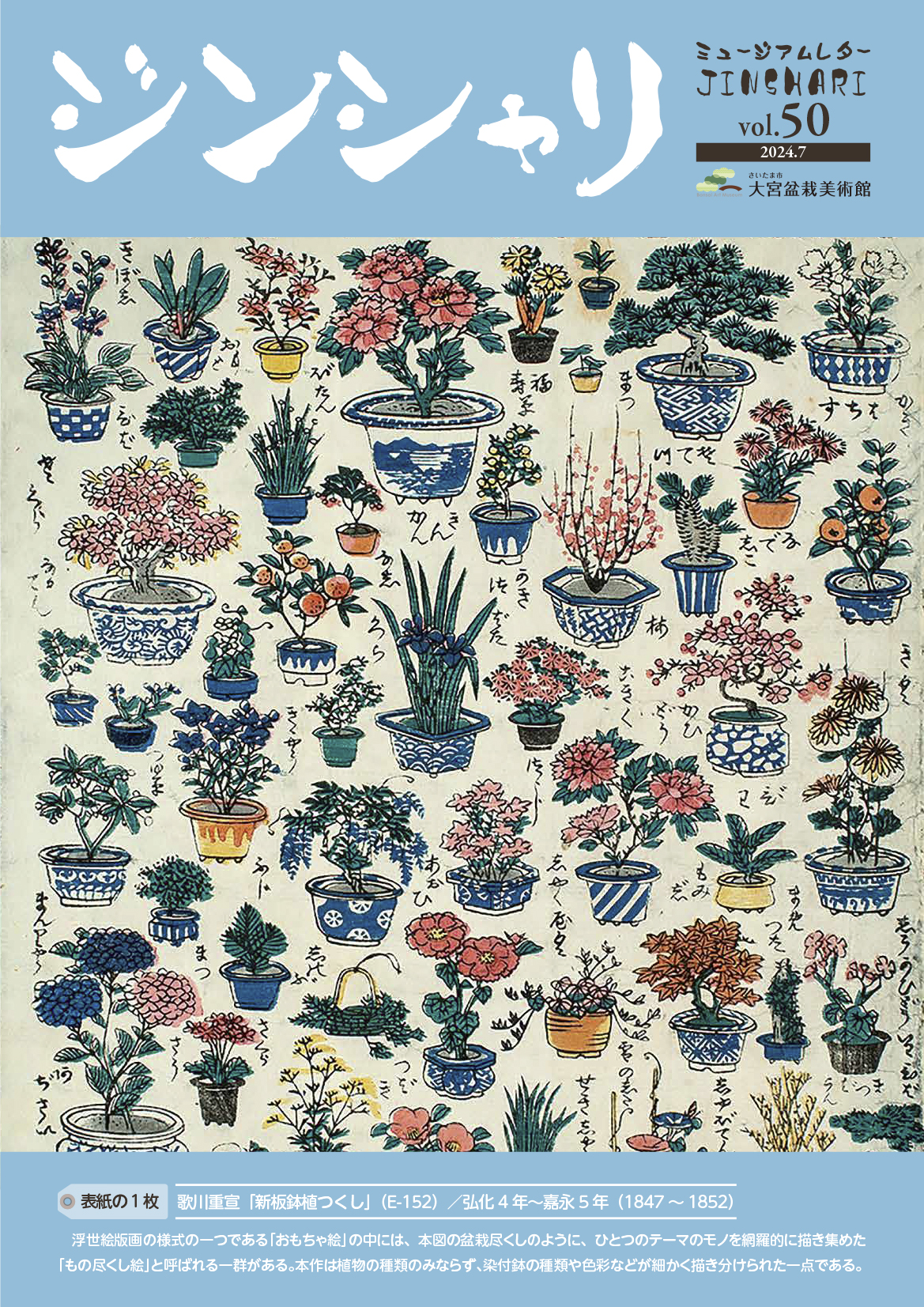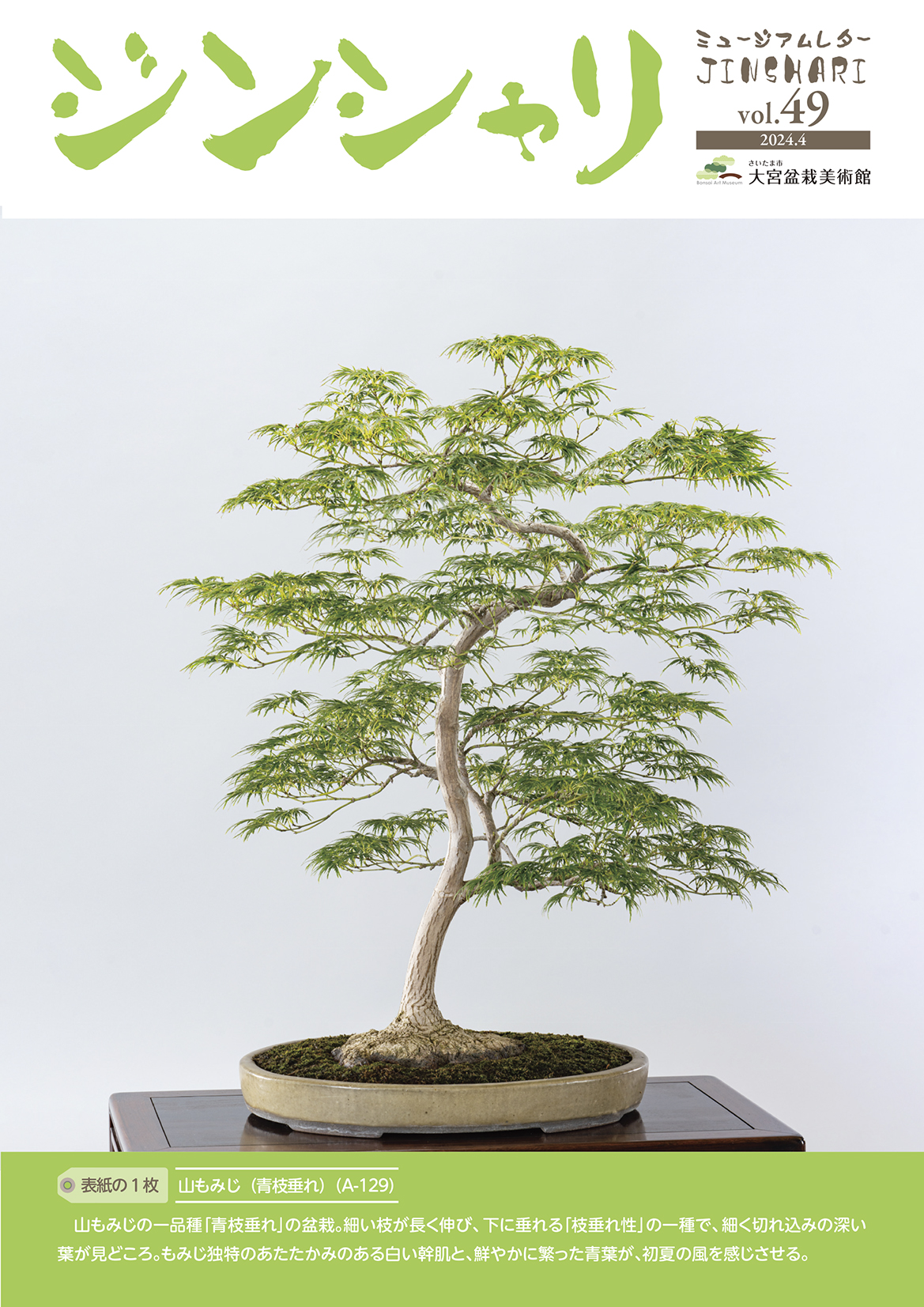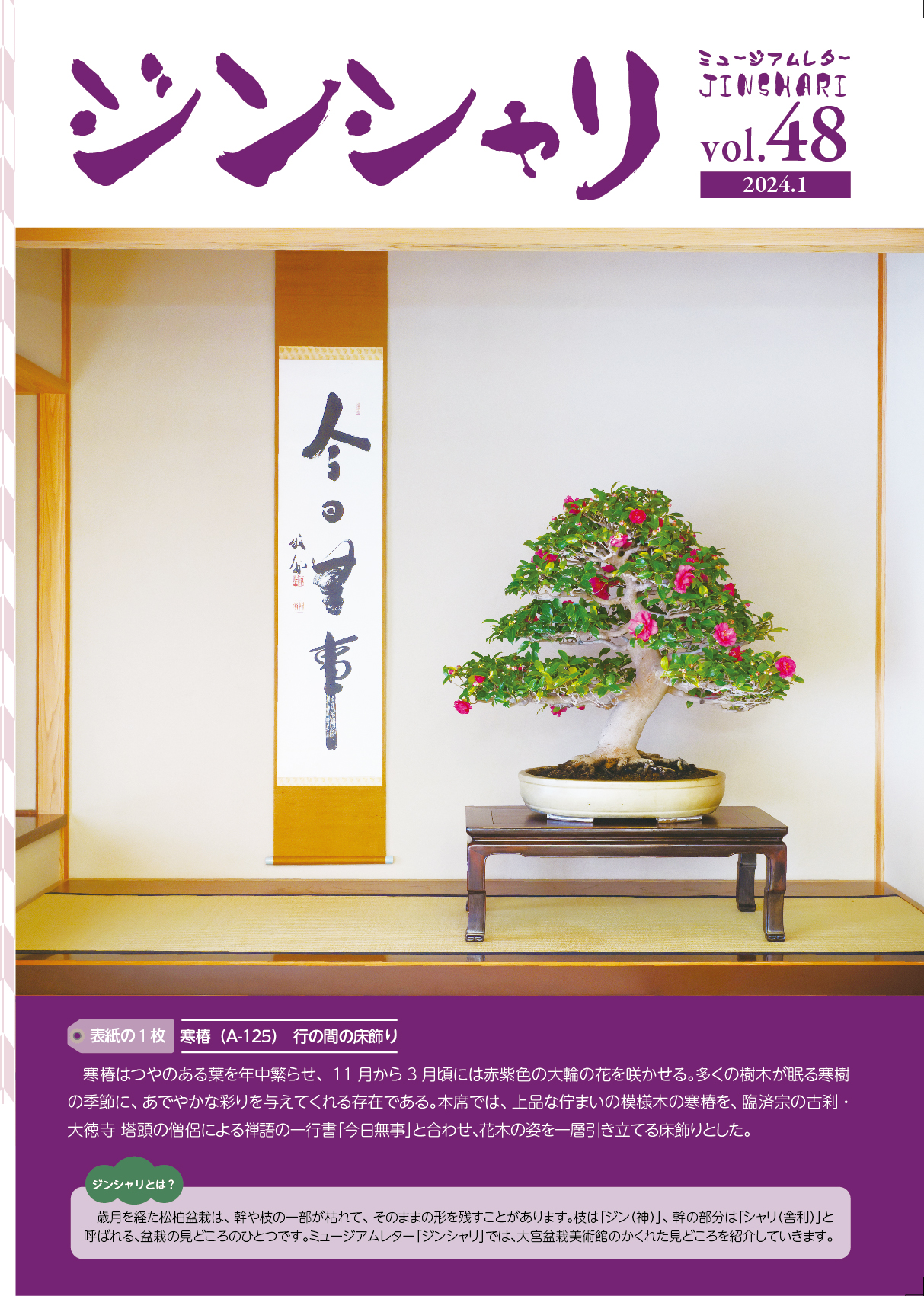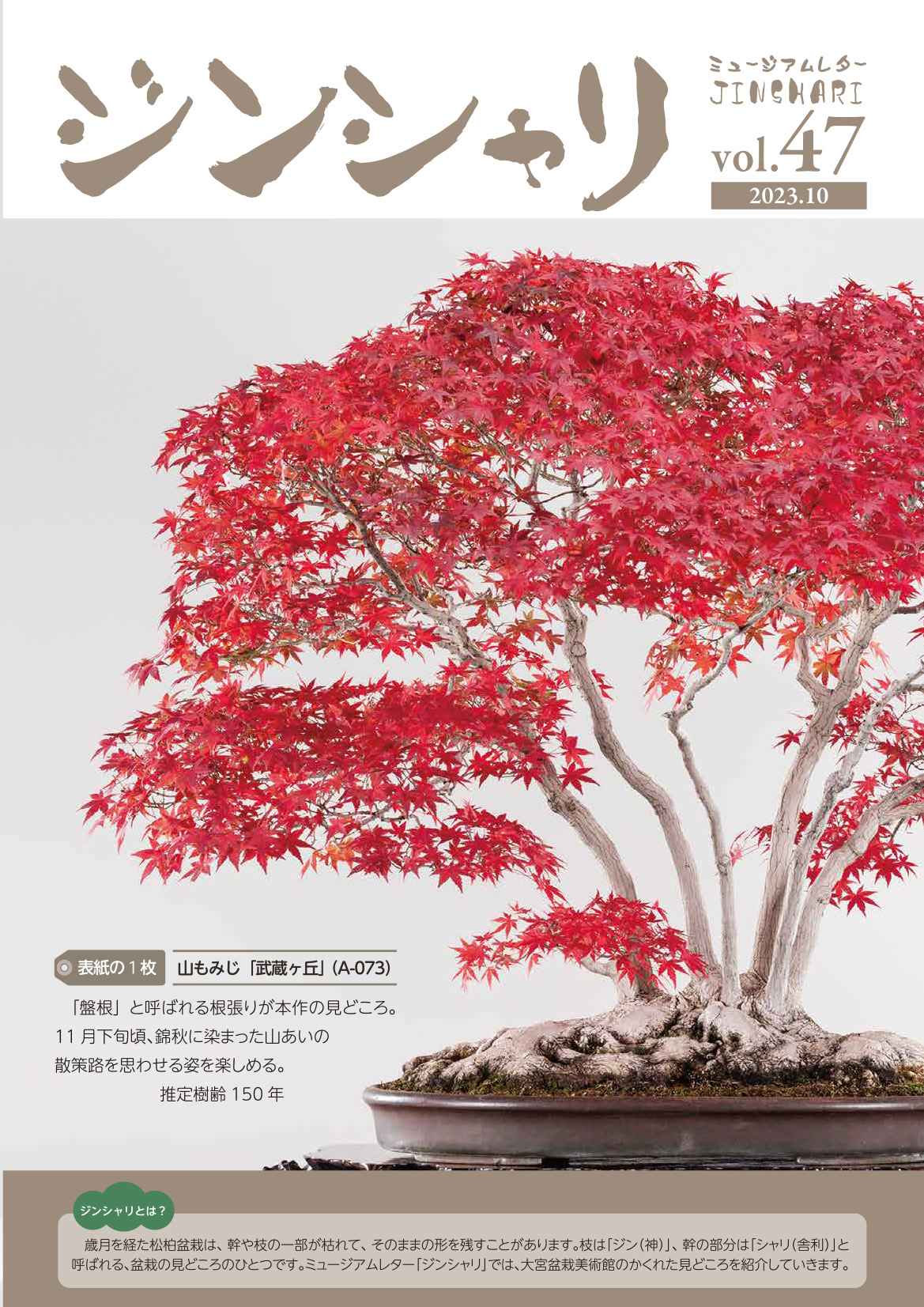Jinshari Vol.45
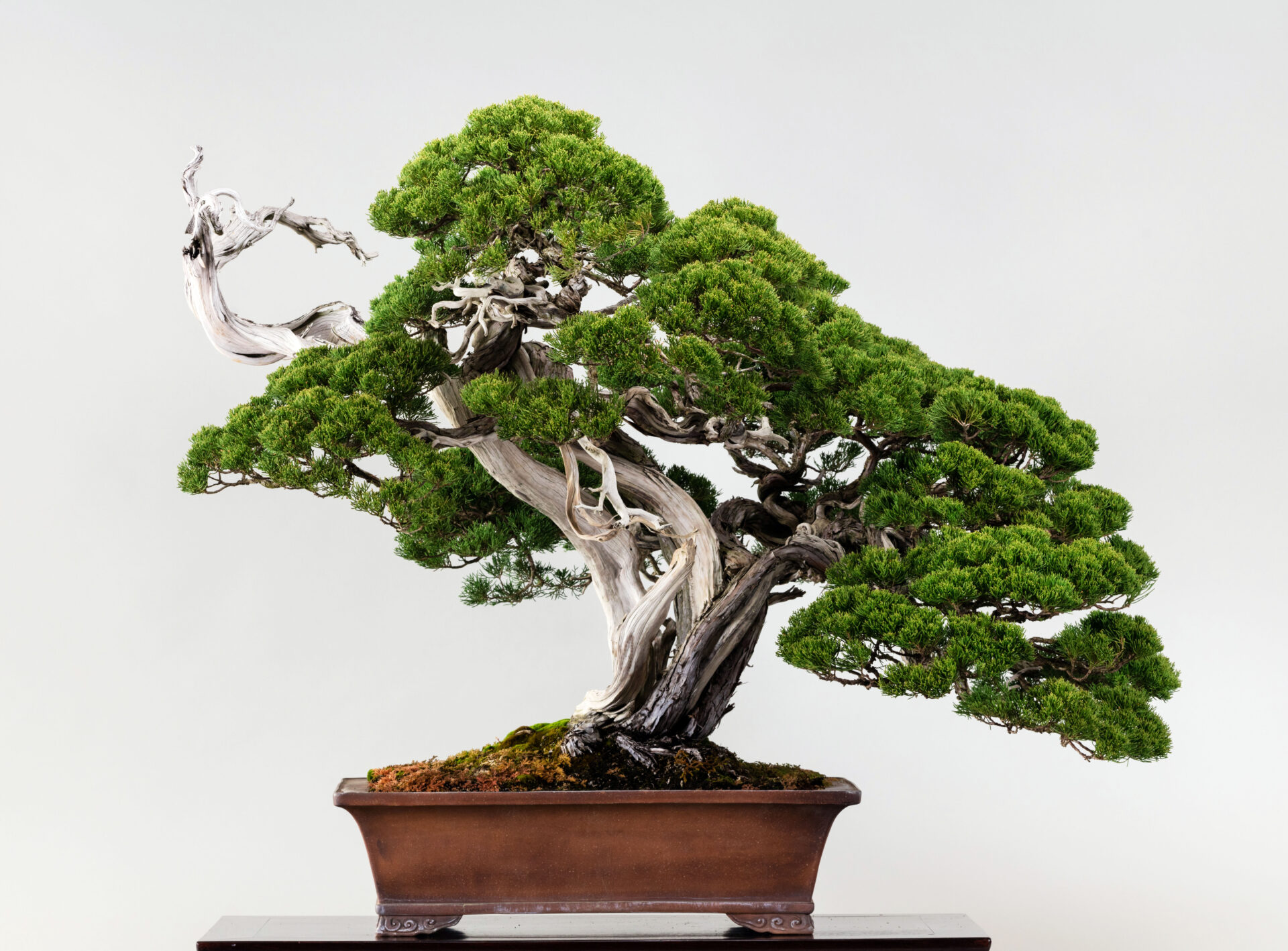
-
【Cover Photo】Japanese Juniper「Buko」(A-023)
The trunk of this bonsai spreads to the left and right as though torn apart from the base with each side obediently following the flow of the branches, drawing a complex curve. The tips of the branches at the left side of the tree have turned to jin, dead whitewood branches, which give impact to its beautiful shape. This tree was collected in the Chichibu area of Saitama, and named “Bukou”, after Mt. Bukou, a well-known mountain in Chichibu.
Estimated Age:350 years
https://www.bonsai-art-museum.jp/en/collection/a-023/
Behind the Exhibits
~Changing the Exhibits With a Priority on the Bonsai
At the Omiya Bonsai Art Museum, the bonsai on display in the collection gallery are changed every week.
Most museums which mostly handle items like folk art, paper and documents will change their exhibitions once every few weeks or monthly. Unlike those other museums, we display bonsai, which are living. As such, bonsai require natural light and air, meaning that the displays must be changed every week in order to protect and preserve them. As you may have realized, the reason that the air conditioning is not used much in the collection gallery is for this very reason. When you visit the museum, you may feel too hot or too cold within the gallery. We apologise for this, but please do understand. We do this because the bonsai are our top priority. We also keep the air conditioning turned off when our curators are changing the displays, so they too feel both extremes of temperature.
Every Sunday, after the museum is closed, the curators take the bonsai currently on display and leave them in the garden all night to let them breathe the open air so that they may stay in good condition.
The pieces on display are changed every Thursday, the day the museum is closed (if a national holiday happens to fall on a Thursday, it is instead done after the museum has closed on that day as the museum is open on national holidays). After the bonsai technicians have brought the bonsai that will be put on display, the curators will place the shoku (the stands which bonsai are placed on) down. As shoku have the role of highlighting the bonsai, they cannot stand out too much or be too plain. Before beginning the job of changing a display, the bonsai technicians first choose a suitable bonsai, then the curators will choose a shoku which goes well with the bonsai.
Finally, for the zashiki-kazari room displays, scrolls and companion pieces which fit the bonsai or the season must also be chosen. The display is then finalised when the bonsai technicians place the bonsai into the room.
Our museum has a large number of masterpiece bonsai in our collection. As such we have several large bonsai which require two fully grown people to carry. Of course, these large bonsai require large shoku too. These shoku will also be very heavy by themselves as they need to be strong enough to handle the weight of the bonsai.
In order to properly display the living art of bonsai, we have to work to preserve them and come up with ways to properly bring out their qualities. What you see when you visit is a complete display, but as we hope you can see, we do a lot behind the scenes to prioritize the bonsai. We hope that with this knowledge, you can enjoy our exhibitions in a new light.
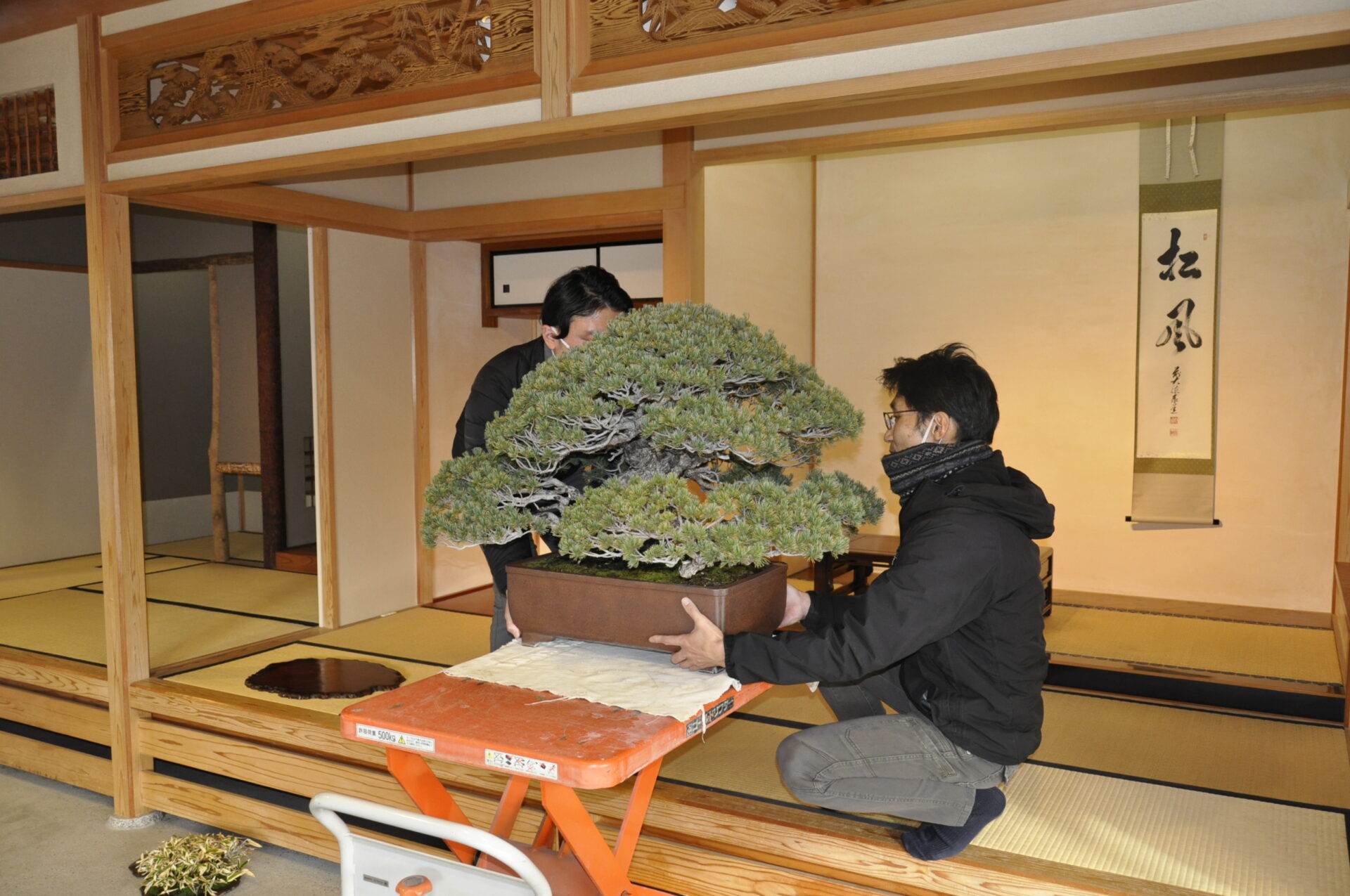
Changing the exhibit (shin style room)
Seasonal Bonsai Exhibition, Shiki: Four Seasons, April, Time of Budding
Artist’s Work
A Treasure of Ōkuma Shigenobu⁉ Repotting a Giant Japanese Black Pine
After planting a bonsai in a pot, the roots will begin to grow and after a few years these roots will begin to fill up in the pot, which will eventually stop the plant from properly absorbing moisture and nutrients. Because of this, every few years it is important to repot the bonsai. This is done by taking it out of the pot, removing the old soil, loosening the roots that have become tangled, cutting old roots which have grown too long, and then planting it back into a pot. The best time to repot a bonsai is from March to April, when the plant begins to bud.
Here we want to show you the repotting of this large Japanese black pine bonsai (A-091), which was done in April last year (2022). This Japanese black pine was owned and apparently cherished dearly by the founder of Waseda University, Ōkuma Shigenobu. It is a very heavy bonsai as it is well over 1 meter tall and nearly 1.5 meters wide. Just lifting it up is very difficult task; it took multiple bonsai artists working together to repot it.
The first task was to take out the bonsai from the pot. Involved in this is loosening up the soil which has become densely packed within the pot, which takes a lot of strength. The bonsai artists used a sickle to loosen the soil at the edges of the pot and then used a root rake to loosen and cut the roots which had become hardened while taking off the old soil. This was also done for the bottom of the pot, ensuring that most of the overgrown roots had been cut and made shorter. You may become worried that the tree might die if you were to see what it looks like after this process, but there is no need to worry as the roots of a healthy tree will vigorously grow back out. This process with the roots is a unique part of cultivating bonsai, ensuring the bonsai uses up nutrients to grow its roots and prevent it from growing.
Once the roots have been cut and loosened, the tree can be potted again. This time it was placed into the same pot as before, but there are occasions where a different pot can be used. However, where the front of the bonsai it was altered, giving the piece a different impression to how it was before it was repotted. Just from looking at these two pictures of before and after the repotting, we believe that you should be able to understand that bonsai are not just living, but also pieces of art reared by artists.
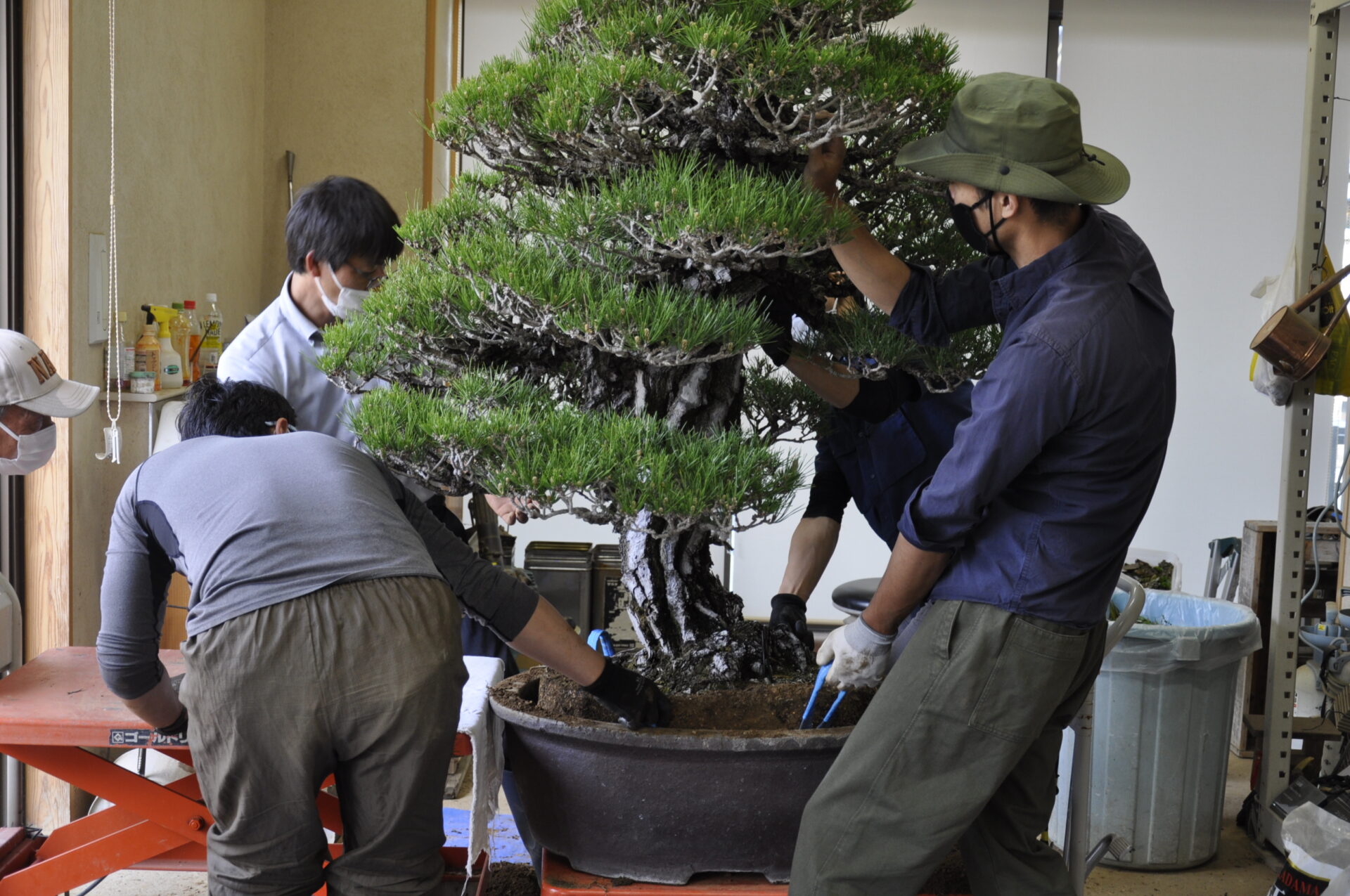
Taking the Japanese black pine from the pot.
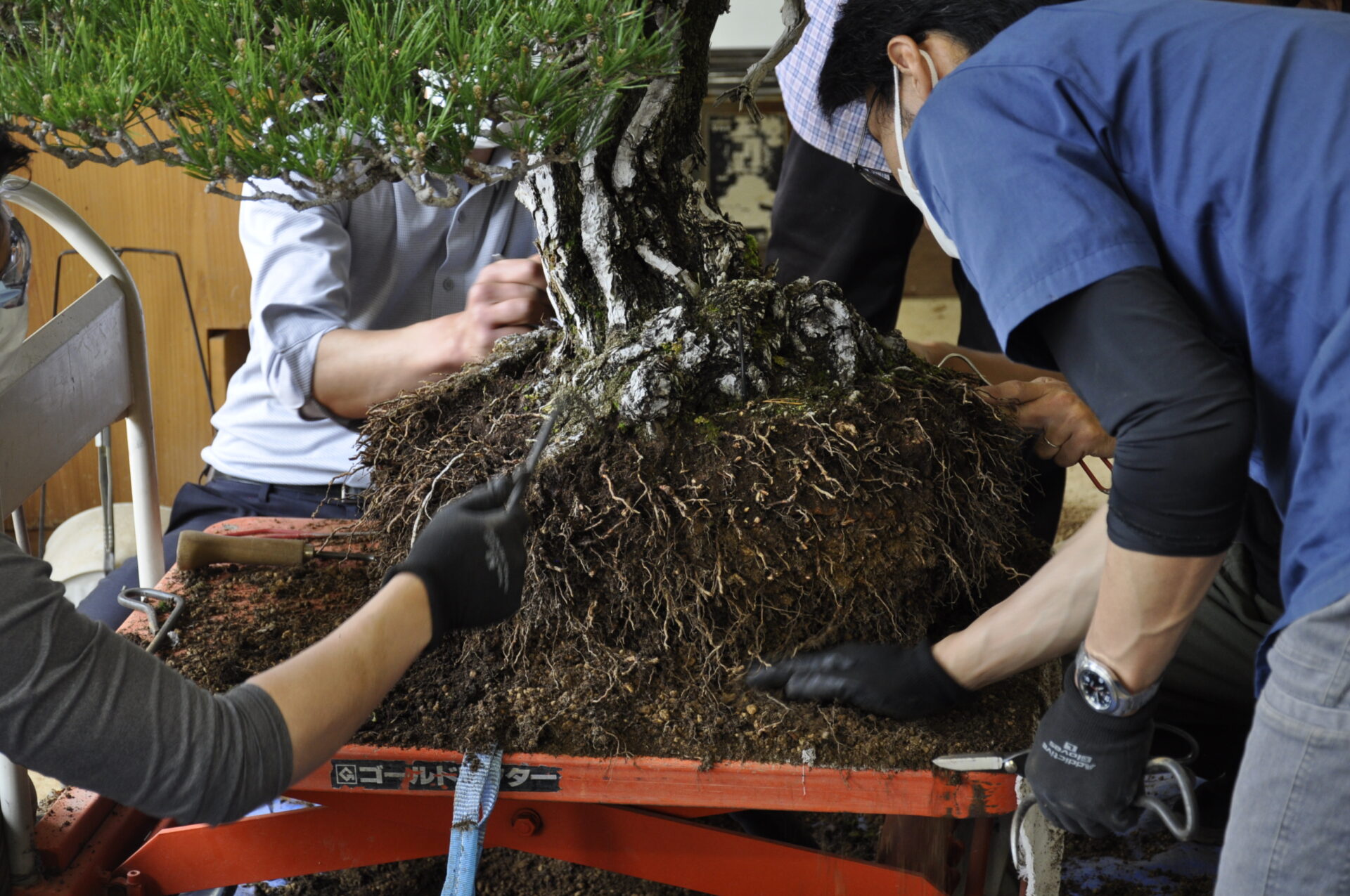
Removing the old, hardened soil from the tree.
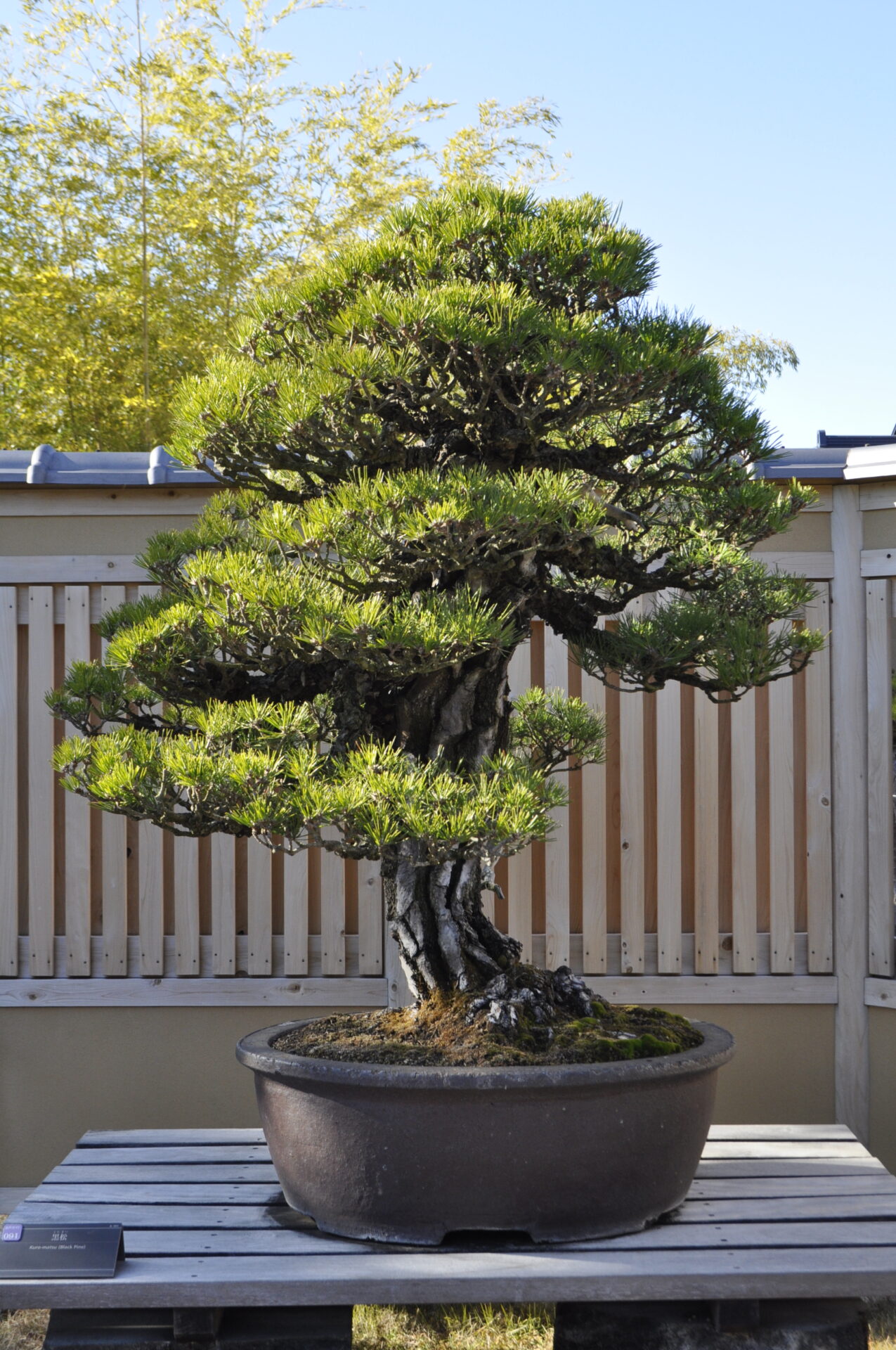
Before repotting.
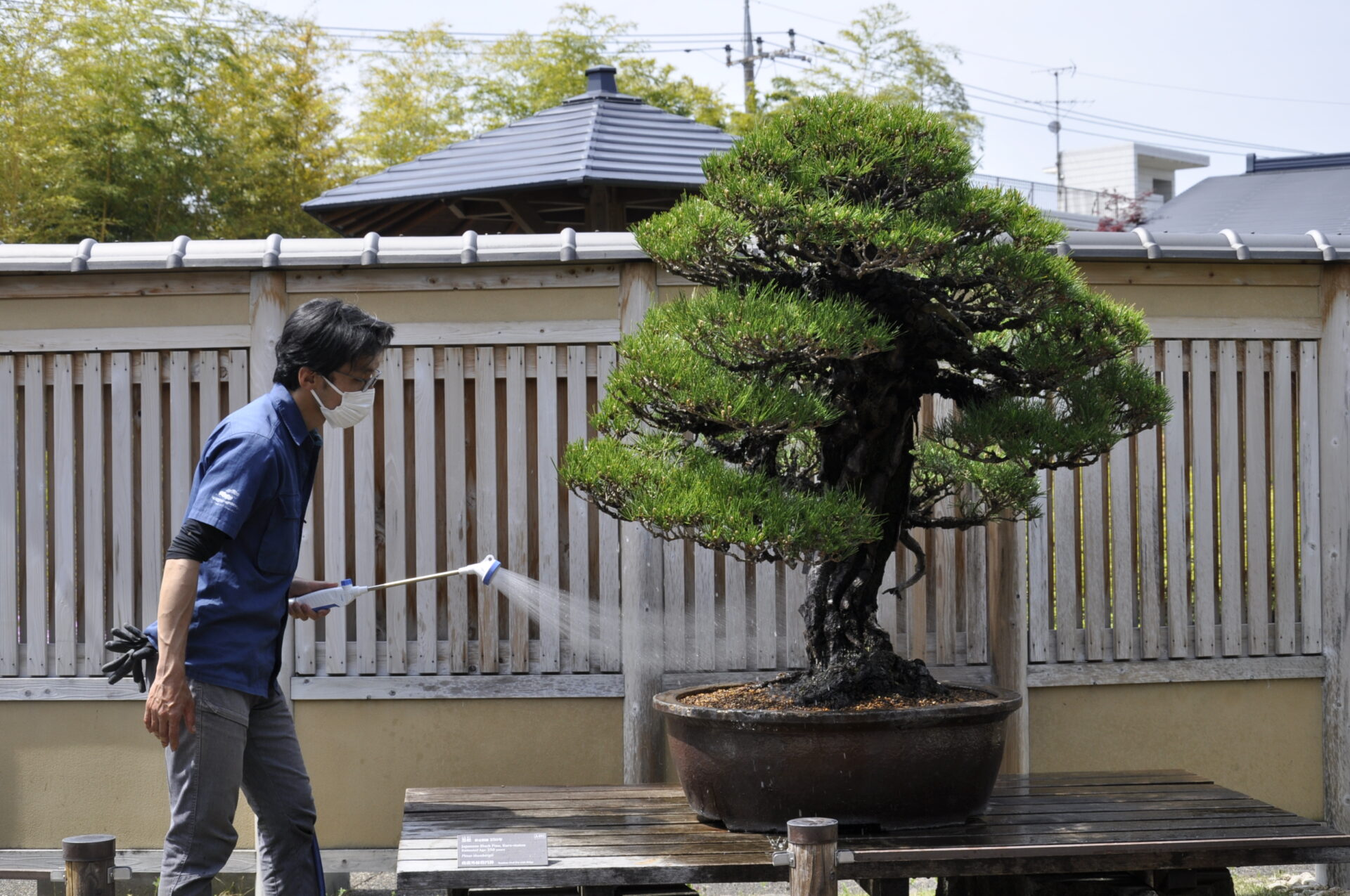
After repotting (during watering).
Volunteer Report
Excited to Fully Volunteer Again
Us volunteer guides wish to introduce the Japanese cultural tradition of bonsai to many people. To help with this we have monthly training workshops where we can freely share our opinions and knowledge with one another. The aim of these workshops is to increase our knowledge of bonsai and improve our ability to give guides to visitors.
When COVID-19 restrictions are further lifted, we look forward to taking part in the following activities:
① Bonsai guides for domestic and foreign groups (guides are available in 5 languages, including English). I hope that those who come and take part in our guides will think that it was worth their time and that they will want to come back to listen again.
② Bonsai workshops throughout the year. Taking part in hands-on bonsai events with willing schools and community centres. With this our practical knowledge will increase and we will be able to give more fulfilling guides. Our position during these workshops will be as teaching assistants.
③ Assisting in any regional bonsai events which the Omiya Bonsai Art Museum participates in.
-Volunteer Toshiyuki Wako
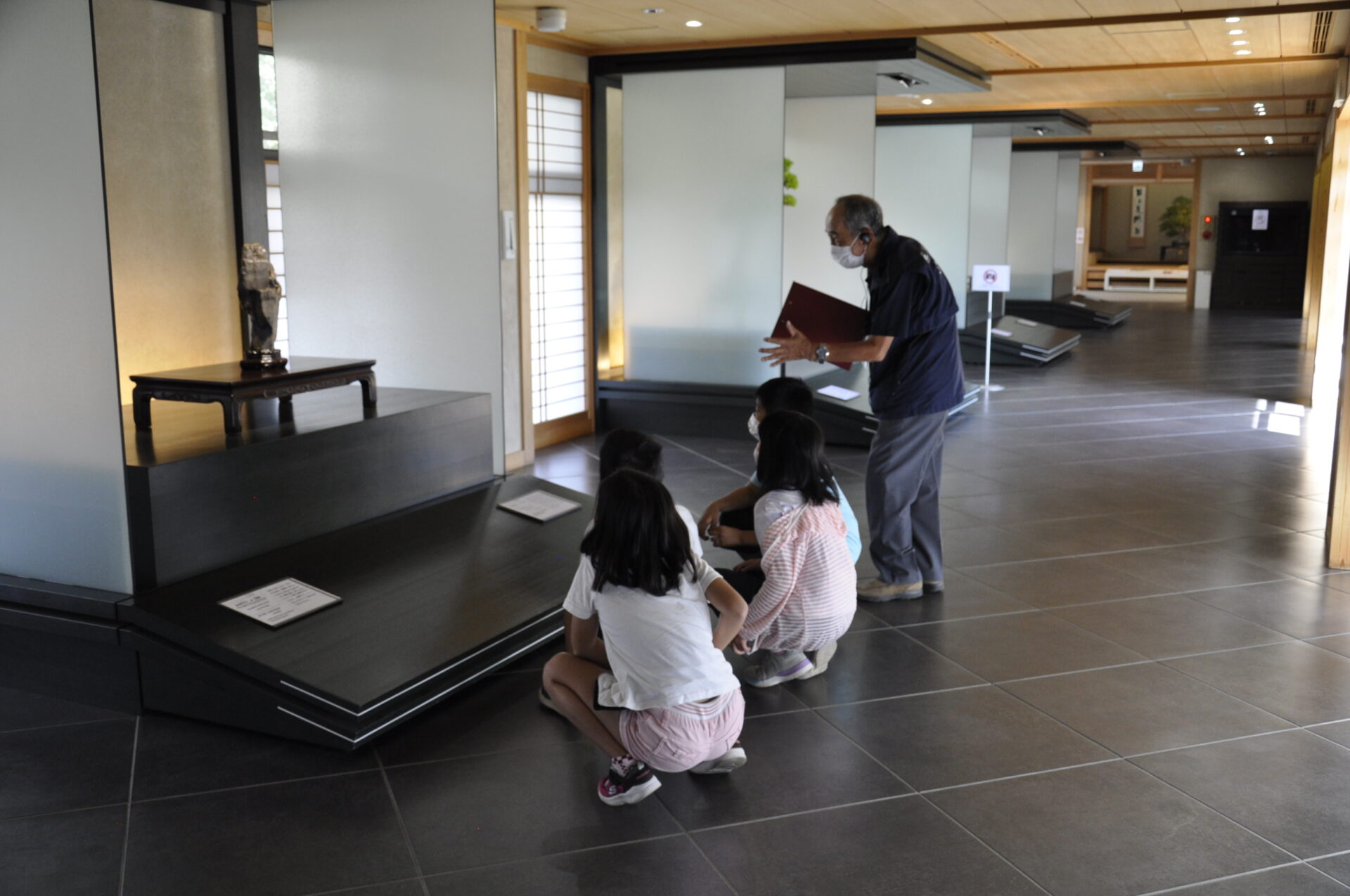
Introducing the exhibits to elementary school students (gallery).
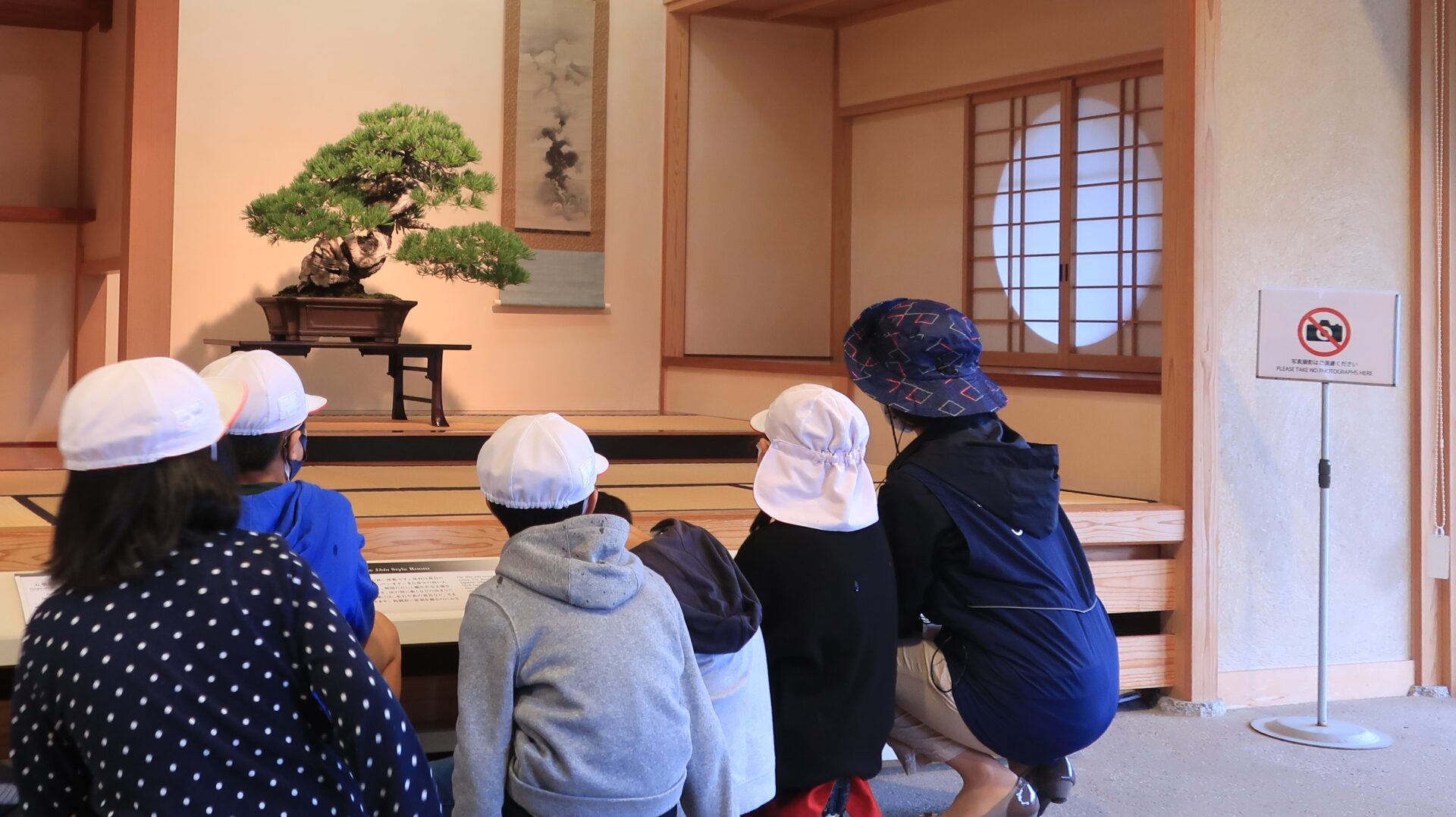
Introducing the exhibits to elementary school students (shin room).
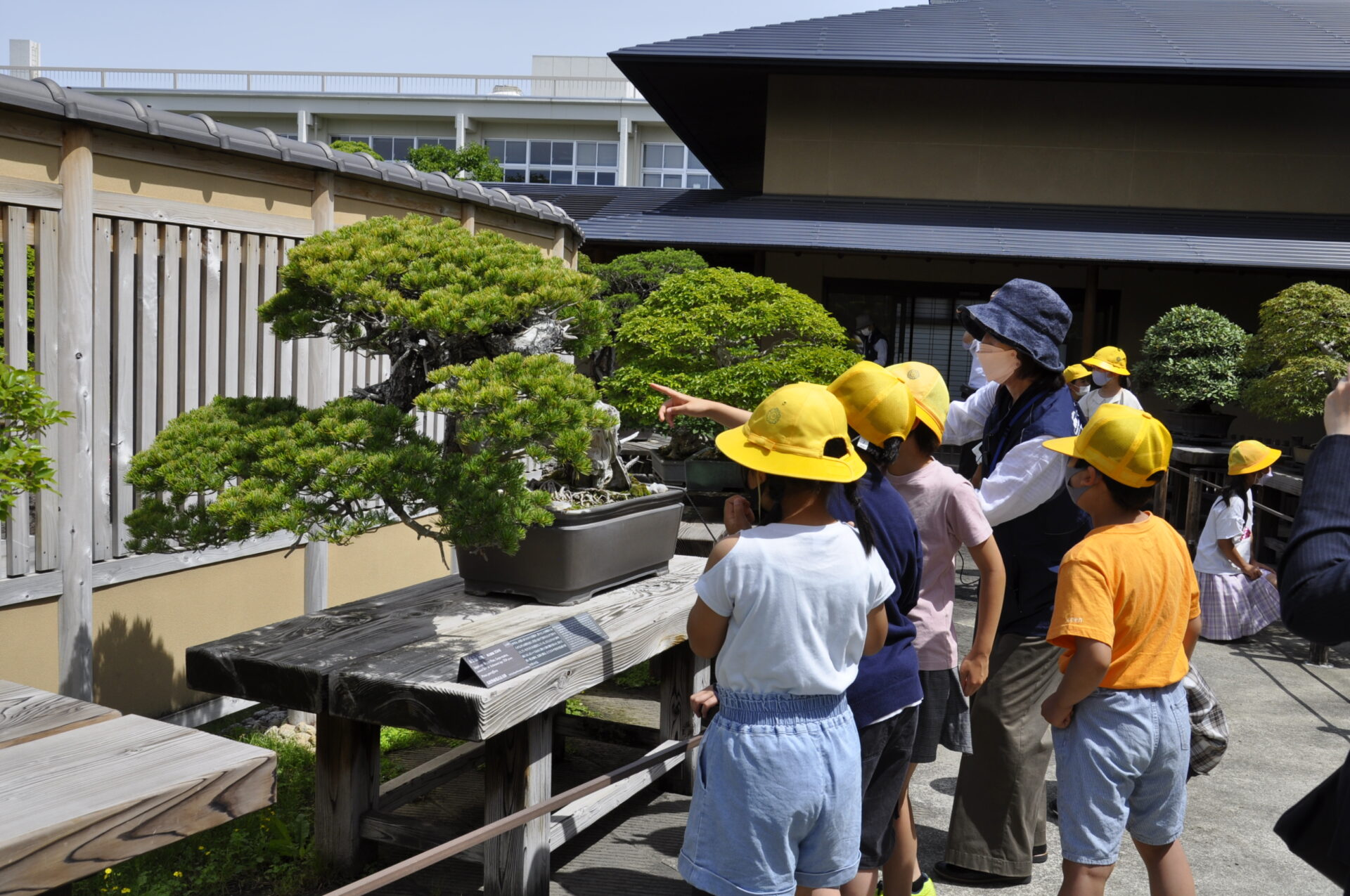
Introducing the exhibits to elementary school students (bonsai garden).
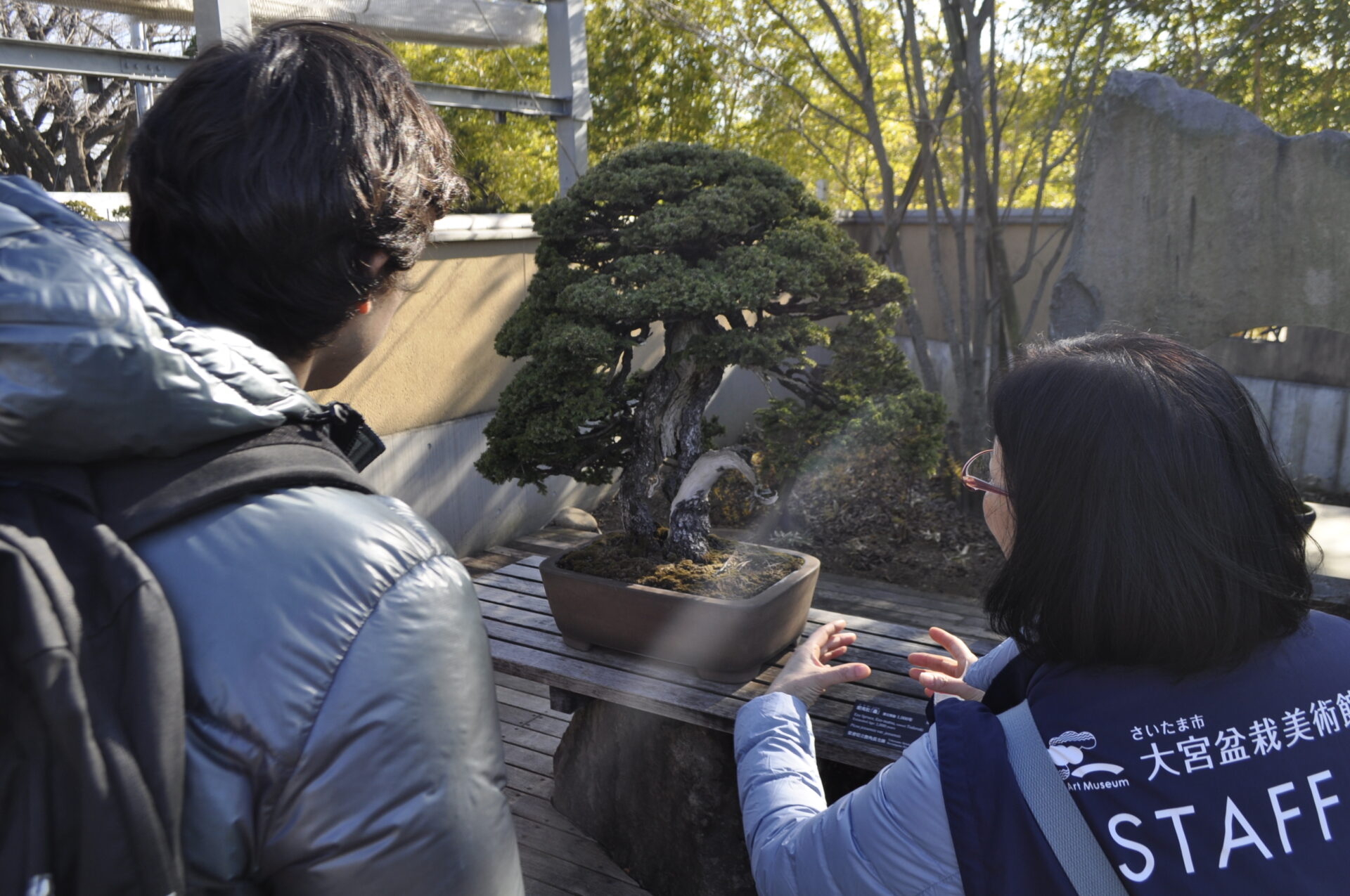
Giving a guide to a foreign visitor (bonsai garden guide).
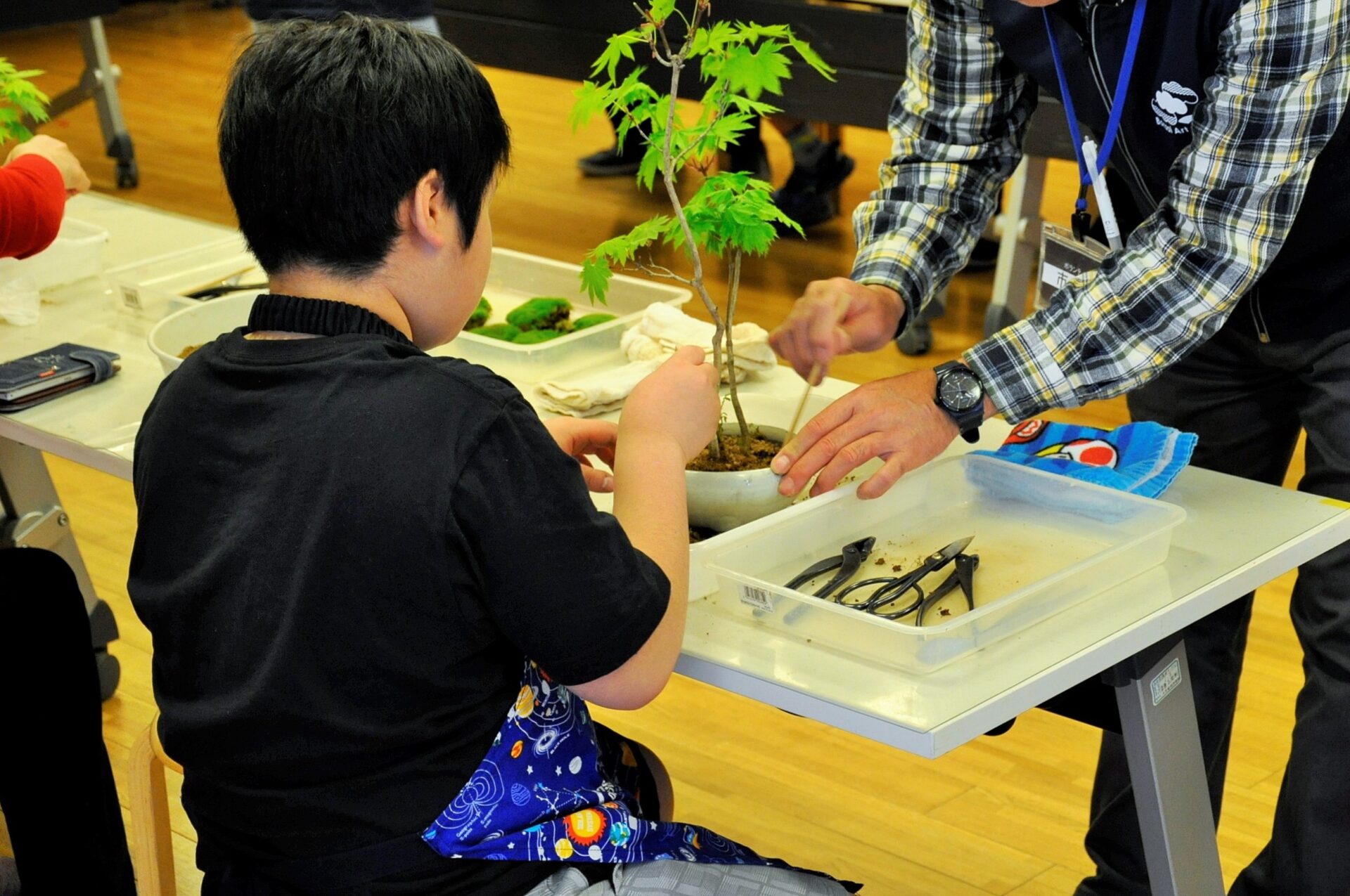
Assisting in a workshop aimed at children.





